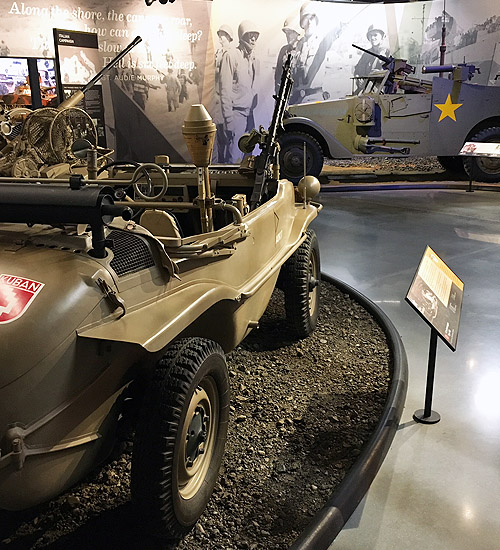2025 American Heritage Museum / Collings Foundation Annual Magazine
issuu.com
Welcome to Issuu’s blog: home to product news, tips, resources, interviews (and more) related to content marketing and publishing.Italian Campaign

M3A1 Scout Car – USA | PERSONNEL CARRIER/RECON
M5A1 Stuart – USA | LIGHT TANK
VW Kübelwagen Type 82 – GER | RECON CAR
Schwimmwagen Type 166 – GER | AMPHIBIOUS PERSONNEL CARRIER/RECON
2 cm Flak 38 – GER | ANTI-AIRCRAFT GUN
The Italian Campaign lasted from 1943 to 1945. It is estimated that between September 1943 and April 1945, 60,000–70,000 Allied and over 100,000 German soldiers died. The invasion of Sicily in July 1943 led to the collapse of the Fascist Italian regime and the fall of Mussolini who was incarcerated on July 25th, 1943. German forces soon took control of northern and central Italy. Mussolini, who was rescued from captivity by German paratroopers. Hitler assisted Mussolini in setting up a puppet state, the Italian Social Republic, to administer the German-occupied territory. Italy fell into a civil war even as Allied and German armies clashed on its territory.
U.S. and British political leaders hoped that an invasion might knock Italy out of the war. The defeat of Italy would enable Allied naval forces, principally the Royal Navy, to dominate the Mediterranean Sea, securing the lines of communications with Egypt and Asia while forcing Axis divisions to transfer troops from the Eastern Front to defend Italy. This assistance had been promised to the Soviet Union, then facing the great majority of German and also Italian troops.
The land forces involved were the US 7th Army under General George Patton, and the British 8th Army, under General Bernard Montgomery. They started with the liberation of Sicily in 1943. Allied forces continued with the invasion of mainland Italy which precipitated the fall of Mussolini’s government and also provoked a German invasion o the north that blocked the Allies from Rome.
Mountainous Italy was a hard place to fight and mistakes were made by both sides, even before the main focus of fighting in Western Europe shifted to France in June, 1944. The result was that difficult, hardscrabble fighting in Italy lasted almost the the end of WWII.



